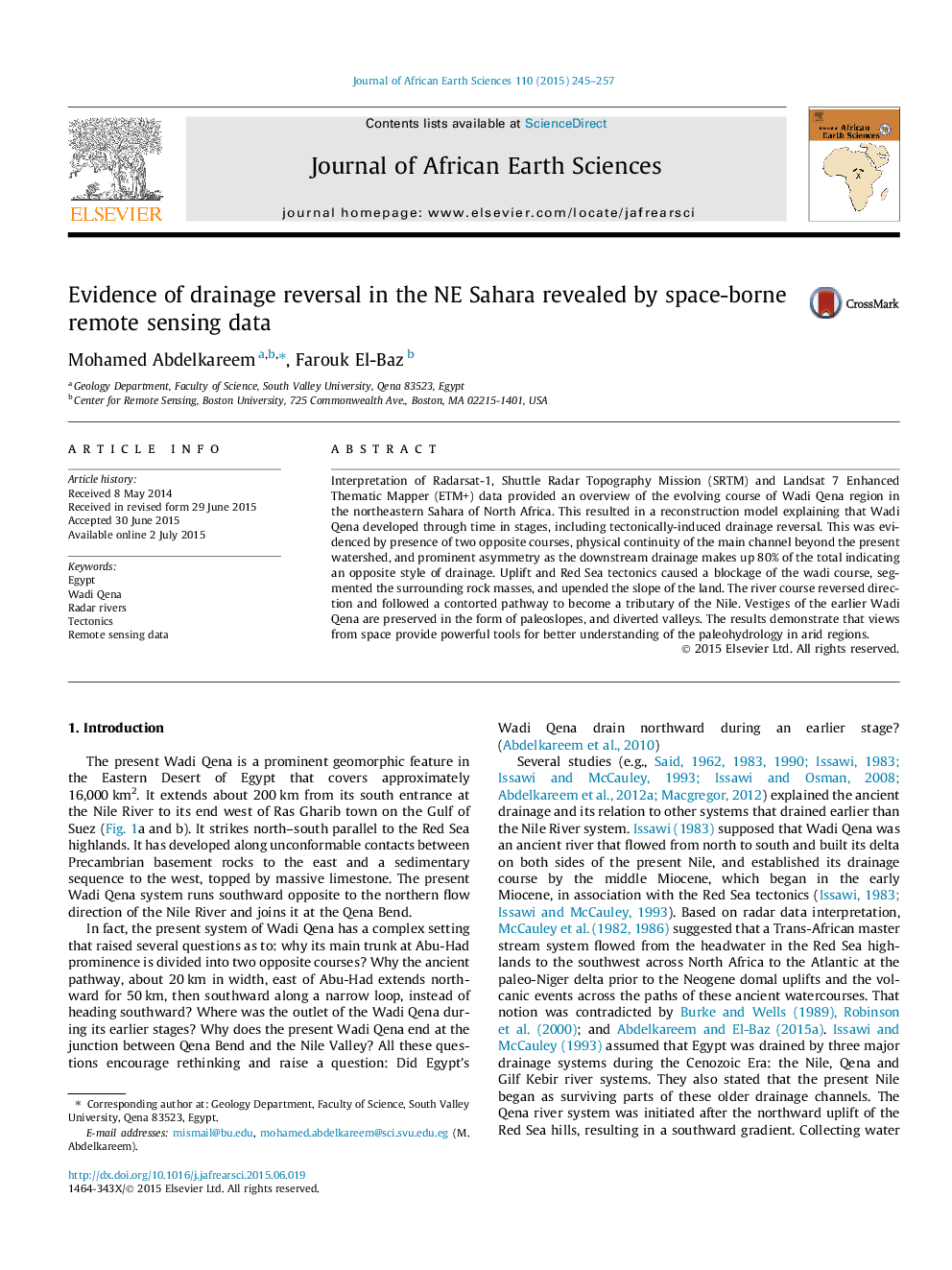| کد مقاله | کد نشریه | سال انتشار | مقاله انگلیسی | نسخه تمام متن |
|---|---|---|---|---|
| 4728601 | 1640197 | 2015 | 13 صفحه PDF | دانلود رایگان |
• Remote sensing data provides invaluable evidences of drainage reversal in eastern Sahara.
• The uplift in the northwestern margin of the Gulf of Suez caused drainage reversal of Wadi Qena.
• Did Wadi Qena drain northward during its earlier stage?
Interpretation of Radarsat-1, Shuttle Radar Topography Mission (SRTM) and Landsat 7 Enhanced Thematic Mapper (ETM+) data provided an overview of the evolving course of Wadi Qena region in the northeastern Sahara of North Africa. This resulted in a reconstruction model explaining that Wadi Qena developed through time in stages, including tectonically-induced drainage reversal. This was evidenced by presence of two opposite courses, physical continuity of the main channel beyond the present watershed, and prominent asymmetry as the downstream drainage makes up 80% of the total indicating an opposite style of drainage. Uplift and Red Sea tectonics caused a blockage of the wadi course, segmented the surrounding rock masses, and upended the slope of the land. The river course reversed direction and followed a contorted pathway to become a tributary of the Nile. Vestiges of the earlier Wadi Qena are preserved in the form of paleoslopes, and diverted valleys. The results demonstrate that views from space provide powerful tools for better understanding of the paleohydrology in arid regions.
Journal: Journal of African Earth Sciences - Volume 110, October 2015, Pages 245–257
